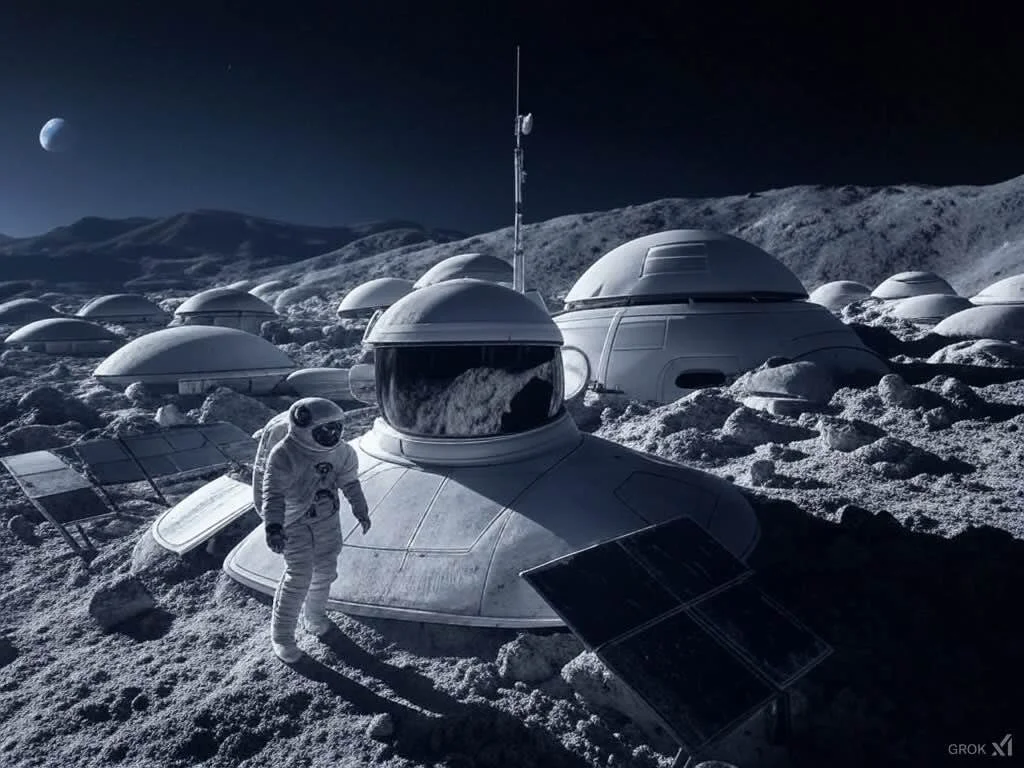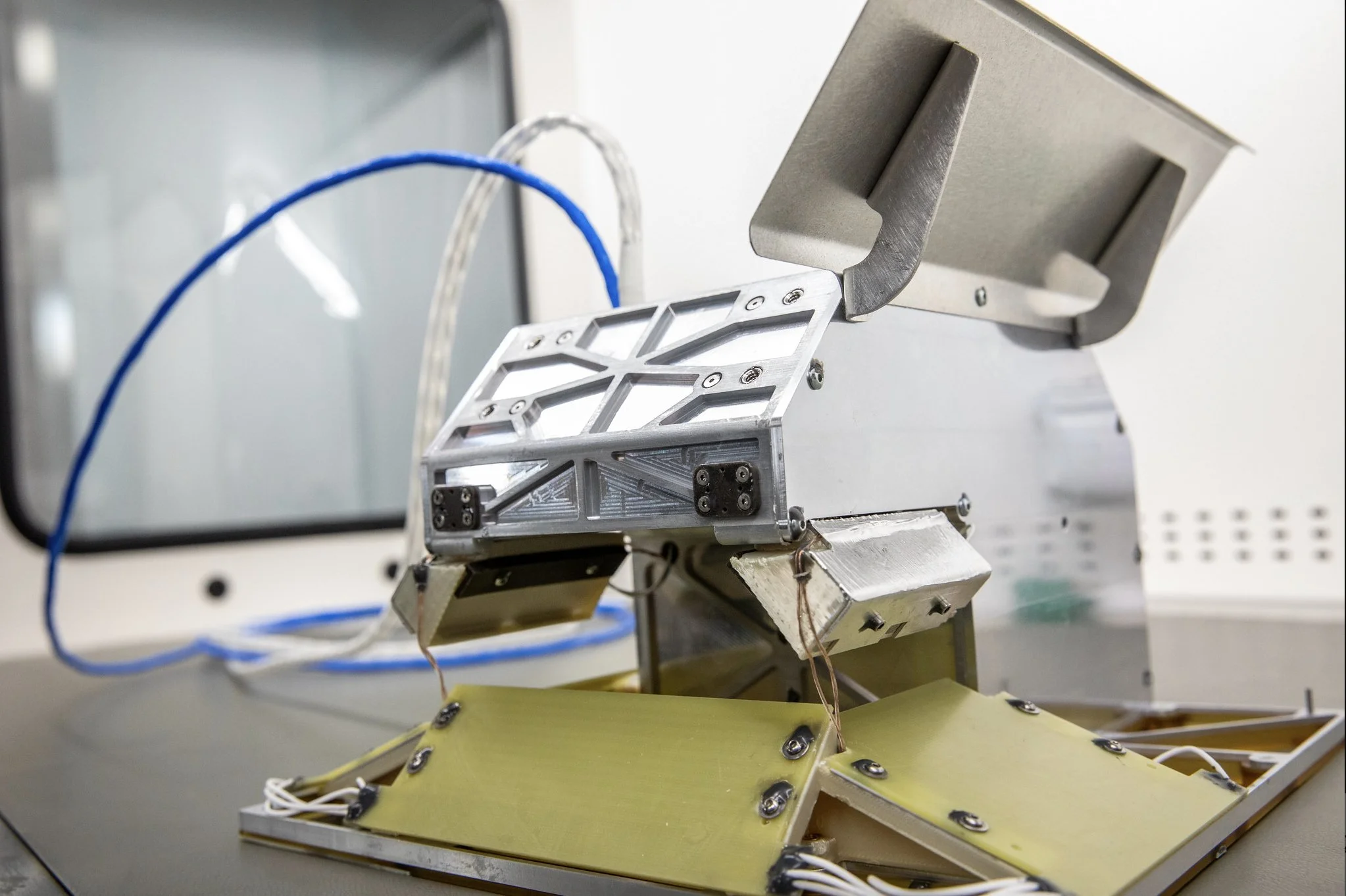Keeping the house clean on the Moon and Mars
Unlike Earth, dust can be a big problem for astronauts living on the Moon and Mars bases. Dust can damage surfaces like glass or thermal radiators, posing significant hazards to humans living there. That is why, for over a decade, NASA has studied one technology to remove dust from these surfaces.
How did we find out about it?
Since the early Apollo programs, NASA learned that dust is one of the significant challenges impacting all future lunar surface missions [1]. In a 2016 report, the International Space Exploration Coordination Group (ISECG) discussed the dust challenges and mitigation solutions. The assessment team stated:
“Dust is still a principal limiting factor in returning
to the lunar surface for missions of any extended
duration. However, viable technology solutions
have been identified, but need maturation to be
available to support both lunar and Mars missions.”
Image Credit -NASAHaving dust is that bad?
“Lunar regolith dust can get into gaskets and seals, hatches, and even into habitats, which can pose many issues for spacecraft and astronauts.[2]”
Cleaning it, as we do on Earth, is not that easy. Astronauts traveling to the Moon realized that dust on the Moon’s surface is sharp and abrasive. It is also very electrostatically charged and highly insulating, so brushing dust can worsen the problem.
On Earth, weathering leads to complex chemical changes in the dust that can smooth its surface. On the Moon, there is no exposure to water and oxygen, preventing this weathering and making the dust like tiny shards of glass.
As you can imagine, the accumulation of lunar dust on glass surfaces will impact the ability to generate enough energy via solar panels for a base on the Moon or Mars. Dust also affects critical surfaces like thermal radiators, spacesuit vizors, joint seals, cameras, and communication antennas.
What are the options?
After exploring many possible solutions to this problem, researchers at NASA’s Kennedy Space Center in Florida focused their effort on developing the Electrodynamic Dust Shield (EDS) technology that generates a “wavelike” electric field that pushes dust off surfaces, preventing dust accumulation[2]. The EDS is a compact and lightweight solution that eliminates the need for moving parts or fluidic materials.
This technology has a long testing record here on Earth, from which it demonstrated its viability. The Materials on International Space Station Experiment – 11 (MISSE-11) brought 12 EDS panels into space in 2019. These panels are made of glass, polyimide, or prototype spacesuit fabric [5]. The preliminary results published in 2020 indicate that the EDS hardware was performing nominally[1]. Although the hardware returned to Earth in 2020, I have not been able to find documentation about the final results.
Image Credit -NASACan it work on the Moon?
We might get answers with NASA’s Commercial Lunar Payload Services (CLIPS) mission. CLIPS initiative mission includes an experiment focused on EDS technology demonstration and getting more realistic data[6].
CLIPS launched on January 15, 2025, on board the Blue Ghost Mission 1, a commercial payload from Firefly Aerospace. Blue Ghost will land on the Moon’s Mare Crisium on March 2 and operate its payloads for about 14 days[7].
The results of this mission might provide a conclusive demonstration of this technology. I will report on this and other CLIP tests as soon as the results are published.]
Image Credit -Firefly AerospaceReferences:
[1] Johansen, Dupuis, M.A., Phillips III J.R., Malissa J.D., Wang J.J,
Hogue M.D., Calle, C.C. et al., “Electrodynamic Dust Shield Testing on the
Materials on International Space Station Experiment 11”, IAC-19,-C2.6.2
[2] https://www.nasa.gov/general/nasa-technology-helps-guard-against-lunar-dust/
[3] EDS: https://techport.nasa.gov/projects/32733
[4] https://www.sciencedirect.com/science/article/pii/S0273117724008019
[5]https://ntrs.nasa.gov/citations/20205006073
[6] https://www.nasa.gov/news-release/nasa-selects-firefly-aerospace-for-artemis-commercial-moon-delivery-in-2023/
[7] https://fireflyspace.com/missions/blue-ghost-mission-1/



